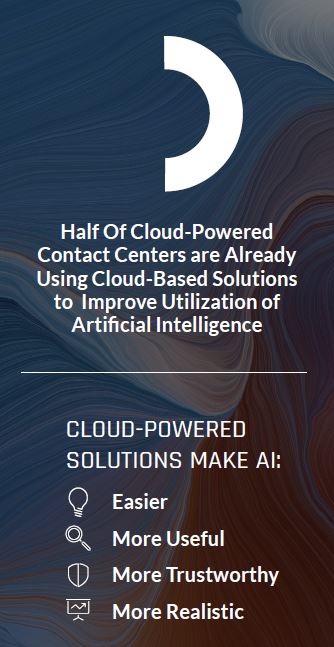
Last week in Part 1 we talked about the rush to cloud adoption as contact centers scrambled to adjust business strategies and technologies during the pandemic. Although reactive at the time, many contact center leaders jumped in headfirst to cloud adoption and discovered enormous benefits to the business – well beyond the inherent scalability and flexibility that was expected. Even more, these benefits were quickly realized, helping organizations evolve to new ways of serving customers, even as the pandemic continuously changed business and consumer behaviors.
In part 2 of our series we’ll learn what steps contact center leaders are looking at next, in order to take full advantage of their new, or upgraded, cloud environment.
Insight #2: Building an analytics-driven approach
As contact center managers became more comfortable with new cloud platforms and the ability to pull in valuable data from across the organization, they started recognizing an intense and growing demand for analytics and, more importantly, insights. Insights based on business data were needed to uncover opportunities to take quick action, especially amid the rapidly changing environment of the early months of the pandemic.
In Calabrio’s 2020 State of the Contact Center report, a full 90% of contact center managers surveyed said they expected analytics demand to grow — based on interest from the executive suite, in particular. But half said they didn’t have the analytics they needed — on customer experience, agent satisfaction and performance, operations and costs — and a third said they weren’t doing any voice-of the customer (VOC) analytics.
surveyed said they expected analytics demand to grow — based on interest from the executive suite, in particular. But half said they didn’t have the analytics they needed — on customer experience, agent satisfaction and performance, operations and costs — and a third said they weren’t doing any voice-of the customer (VOC) analytics.
From our 2021 conversations, we found that cloud-based solutions are directly helping contact centers rise to meet the demand for analytics. Nearly 70% of cloud-powered contact centers say that cloud-based solutions are helping them improve analytics capabilities — for both customer and employee data. Notably, contact centers that remain on-premises are much slower to recognize the benefits and how much the cloud could accelerate efforts to gain better business insights.
In this new Cloud-Smart Era, contact center managers agree that analytics will increasingly become a driving force. As insights become more accessible, they will not only power smarter decision-making
within the contact center, but also give teams greater visibility and ability to impact the business, helping drive customer-centric decision-making.
Furthermore, the cloud is dramatically changing perceptions about the practicality of artificial intelligence (AI) and machine learning (ML) technologies. Cloud-powered contact centers view AI as significantly more useful, easier to use, and more trustworthy than those not yet in the cloud. They also see the future promise of AI as more realistically achievable than in on-premises contact centers.
Once again, it’s clear that on-premises contact centers struggle to see the potential, and risk missing out on valuable data-driven insights by delaying adoption of more modern tools. It’s understandable that some organizations aren’t yet ready to make the technology leap, but contact centers no longer need to hire AI experts to implement and use AI tools. Cloud-based solutions offer AI-driven tools that are intuitive and accessible across business units. This makes AI more practical and scalable, enabling contact centers to build AI into core workflows and rapidly catch up to the early AI adopters.
Next week, in Part 3, we’ll discuss what managers had to say about cloud adoption and its role in customer satisfaction. In addition, we’ll learn how contact center managers are using workforce engagement tools to improve agent engagement and the employee experience.
Edited by
Erik Linask